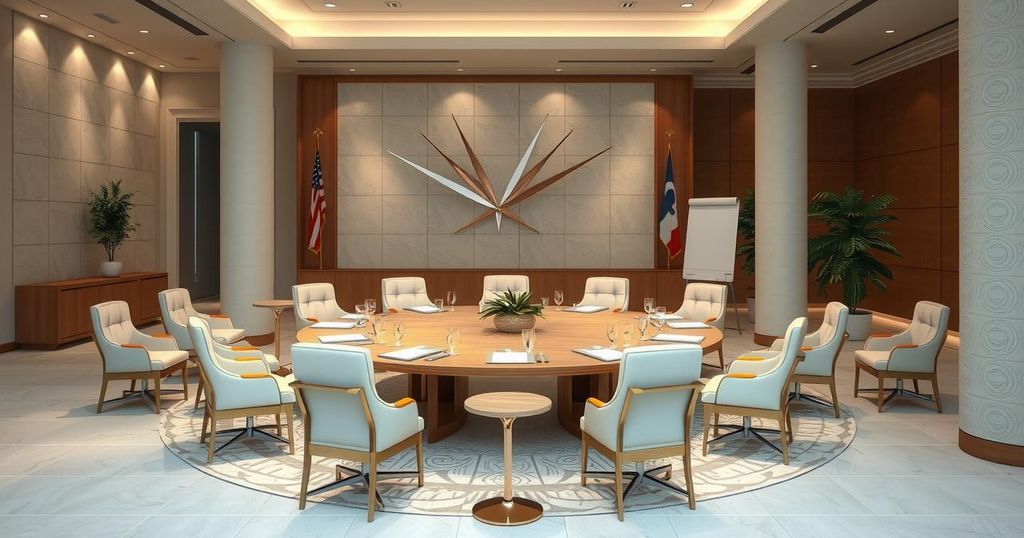Iran and the U.S. completed a second round of nuclear negotiations in Rome, with the next talks scheduled in Oman. Iranian officials expressed optimism regarding the discussions, which are crucial against rising regional tensions. Both nations are committed to serious dialogue to address economic sanctions affecting Iran’s economy and nuclear ambitions.
The Iranian Foreign Minister has announced that the next negotiation round regarding Iran’s nuclear program with the United States is scheduled in Oman on April 26, with preliminary technical discussions planned beforehand. This follows a recent second round of talks held in Rome, which Iranian official Abbas Araghchi characterized as constructive. He expressed hope for improved outcomes following upcoming meetings with technical experts.
Notably, the recent discussions mark a noteworthy moment given the longstanding tensions between Iran and the U.S., which have persisted since the 1979 Islamic Revolution. Despite the lack of immediate details from U.S. representatives, officials indicated that both sides are committed to continuing dialogue in a serious manner to potentially lift impactful economic sanctions against Iran.
Iran’s negotiations are complicated by rising tensions in the Middle East, exacerbated by the ongoing Israel-Hamas conflict. These dynamics heighten the stakes, with threats of military action or Iran pursuing nuclear armament. Former President Donald Trump emphasized the necessity of preventing Iran from acquiring nuclear weapons, underscoring the global implications of the talks.
In preparation for negotiations, both Araghchi and U.S. envoy Witkoff have engaged with various parties, including the Italian Foreign Minister. Italy has expressed its willingness to facilitate further talks. Moreover, Rafael Mariano Grossi, head of the International Atomic Energy Agency, has been involved, highlighting the agency’s crucial verification role should a deal be struck.
Iran’s internal economic challenges, including a sharply devalued currency and issues regarding mandatory hijab laws, fuel the government’s desire for a diplomatic resolution. Recent reports indicate improvements in Iran’s currency, likely tied to the ongoing negotiations. Additionally, the arrival of used aircraft for Iran Air signals potential shifts in trade relations, pending U.S. approval.
In summary, the recent negotiations between Iran and the United States signify a critical step in addressing Iran’s nuclear ambitions amidst a backdrop of heightened regional tensions. Both countries seem committed to continued dialogue, aiming for a constructive resolution that may lead to the lifting of sanctions. The outcome of the forthcoming talks in Oman will be pivotal not only for U.S.-Iran relations but also for broader Middle Eastern stability.
Original Source: www.wdrb.com






